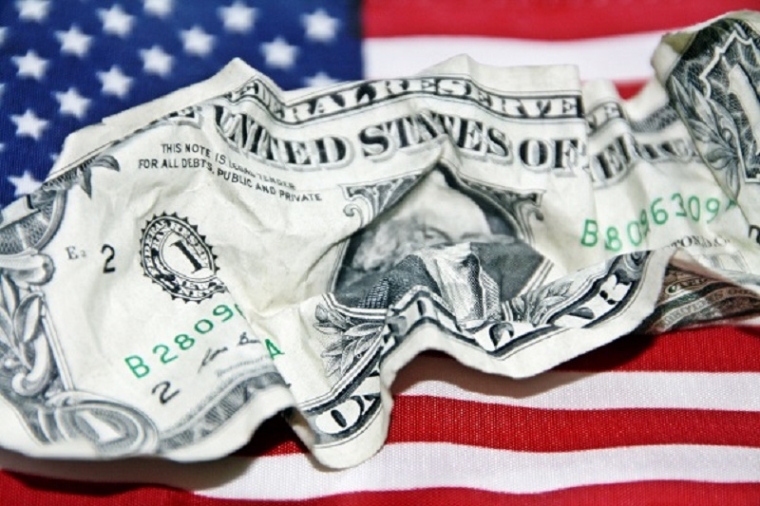
By James Riley
A stronger US dollar on global FX markets, coupled with a March quarter GDP increase on the lower side compared to what we have been use to over recent years, sent the Kiwi dollar down to the low of 0.6825 on 21 June. However, consistent with the pattern of pricing behaviour we have witnessed over recent months, the NZ dollar attracted buyers at the lower levels and has since recovered to above 0.6900.
The reaction by the local financial markets to the +0.50% expansion in the economy in the March quarter was to immediately sell the Kiwi lower, as weaker growth in early 2018 does push the timing further out on any interest rate increases in 2019. There was no follow-through selling of the Kiwi dollar after the initial sell-off, indicating that offshore players in the NZ dollar forex market did not see this economic performance measure as too disastrous. Hedge funds and speculators who trade the Kiwi dollar have been well rewarded with the strategy to buy the Kiwi in the 0.6800’s over recent times, therefore they would have had no interest at selling the currency at that level.
Over coming weeks, in the absence of any important local economic data until the CPI inflation numbers in mid-July, the NZD/USD exchange rate movements will be determined by what the US dollar itself does on the global stage. Most currency market participants and commentators are recognising that the continuation of interest rate increases by the Federal Reserve is US dollar positive in the short term. However, the sheer size of the US Government’s internal budget deficit in 2019 will be a major US dollar negative in the medium term.
To fund the deficit the US Government will significantly increase the supply of Treasury Bonds into the market. As US Treasury Bond prices fall, (yields increase) due to the supply increase, the foreign holders of US Treasury Bonds will be keen sellers before they lose even more value. As they disinvest and take their money home they are sellers of US dollars.
There is also plenty of historical evidence that proves the US dollar does weaken when their internal budget deficits increase. The argument goes along the lines that the US dollar needs to weaken to a lower level before foreign investors are attracted in to fund the deficit. Adding to the negative sentiment against the US dollar in 2019 will also be the pricing in advance of the fact that the Federal Reserve will be nearing the end of its process of returning US short-term interest rates to their monetary policy neutral position of around 3.00% to 3.50%.
The interaction of these positive and negative influences on the USD value should maintain the EUR/USD exchange rate between $1.15 and $1.20 over coming months, but looking further forward into 2019, the US dollar is likely to return to well above $1.20. A weaker US dollar to $1.25 to $1.30 against the Euro would place the NZD/USD rate above 0.7500.
To date there has not been a major reaction by the FX markets to the escalating trade wars between the US and the rest of the world. Up until now, policy changes by President Donald Trump have been positive for the US economy and US business. The corporate tax cuts and the reduction in environmental regulations have added to the US growth impulse.
Unfortunately, the Trump policy changes on import tariffs/border taxes will be very negative for the US economy and business confidence. The US sharemarkets are starting to wobble and US manufacturers are anticipating lower profitability. In the medium term the trade wars that Trump is instigating is negative for the US dollar. Only time will tell how much damage Trump and his cohorts will do to the US economy with these misguided trade policies.
Here in New Zealand, the Acting Prime Minister Winston Peters assures us that the NZ economy must be doing well because the NZ sharemarket keeps going up. The Acting Prime Minister appears as misguided as Mr Trump, as the NZ sharemarket largely follows global equity markets. If those markets decline, we follow, totally unrelated to how the NZ economy or listed NZ companies are doing. Low interest rates are the main reason the NZ sharemarket has performed well over recent years with many investors chasing high dividend yielding stocks. Business confidence in New Zealand remains weak due to uncertainties caused by the Government and this does prevent any NZ dollar strength.
As anticipated, the Australian dollar appears to be finding some support at the 0.7400 level against the USD after a major sell off from 0.8100 in January. A stabilising Australian counterpart does suggest that the Kiwi dollar should continue to hold in the 0.6800 to 0.7200 trading range. The NZD/AUD cross rate spiked to a high of 0.9380 at one point last week, however going forward the AUD should outperform the NZD, sending the NZD/AUD cross-rate lower to below 0.9200 from its current 0.9270 level. The Australian economy will expand at a higher growth rate than New Zealand this year and their commodities have greater potential to increase in price than ours because our agriculture commodities are already at historical highs.
Daily exchange rates
Select chart tabs
We welcome your comments below. If you are not already registered, please register to comment
Remember we welcome robust, respectful and insightful debate. We don't welcome abusive or defamatory comments and will de-register those repeatedly making such comments. Our current comment policy is here.